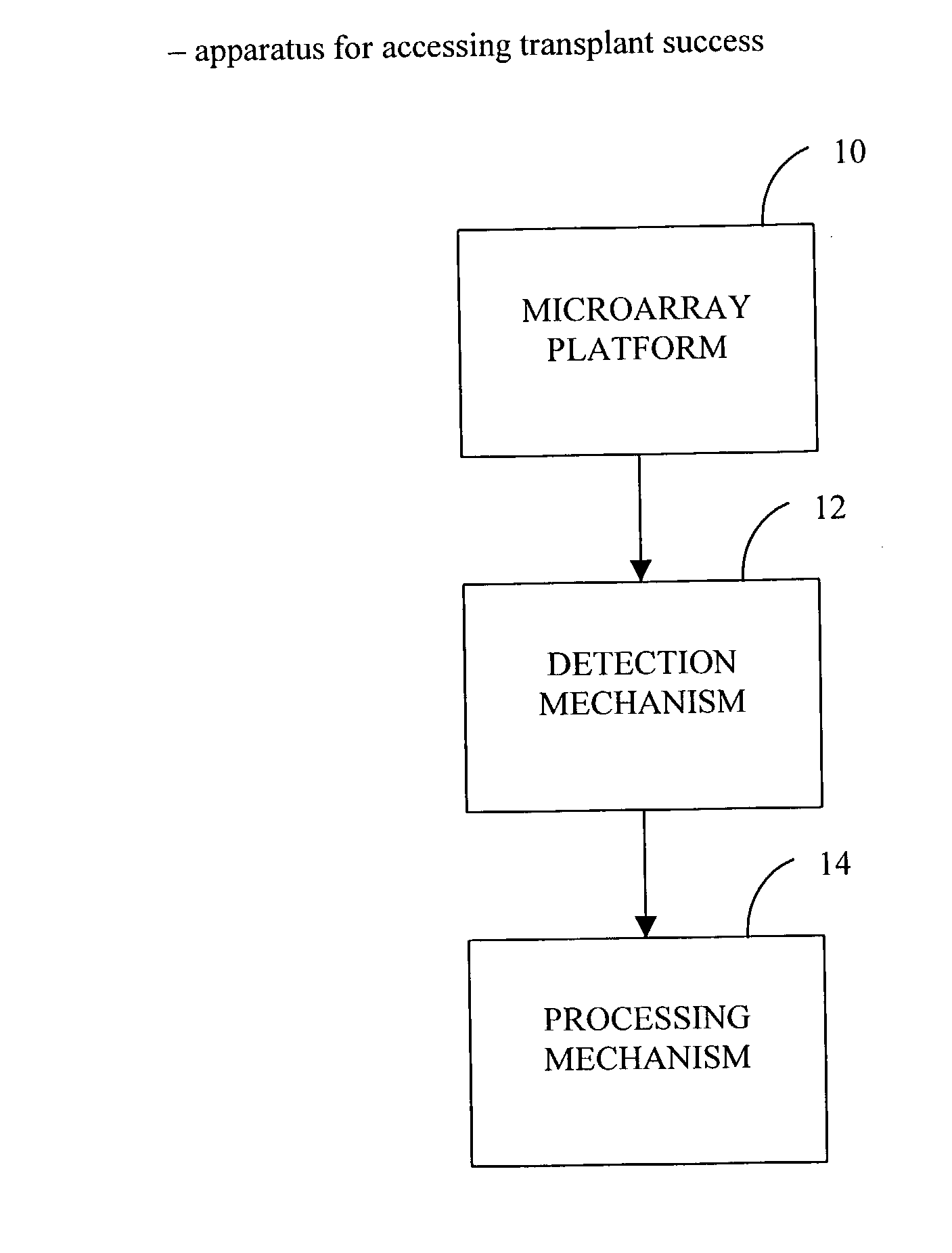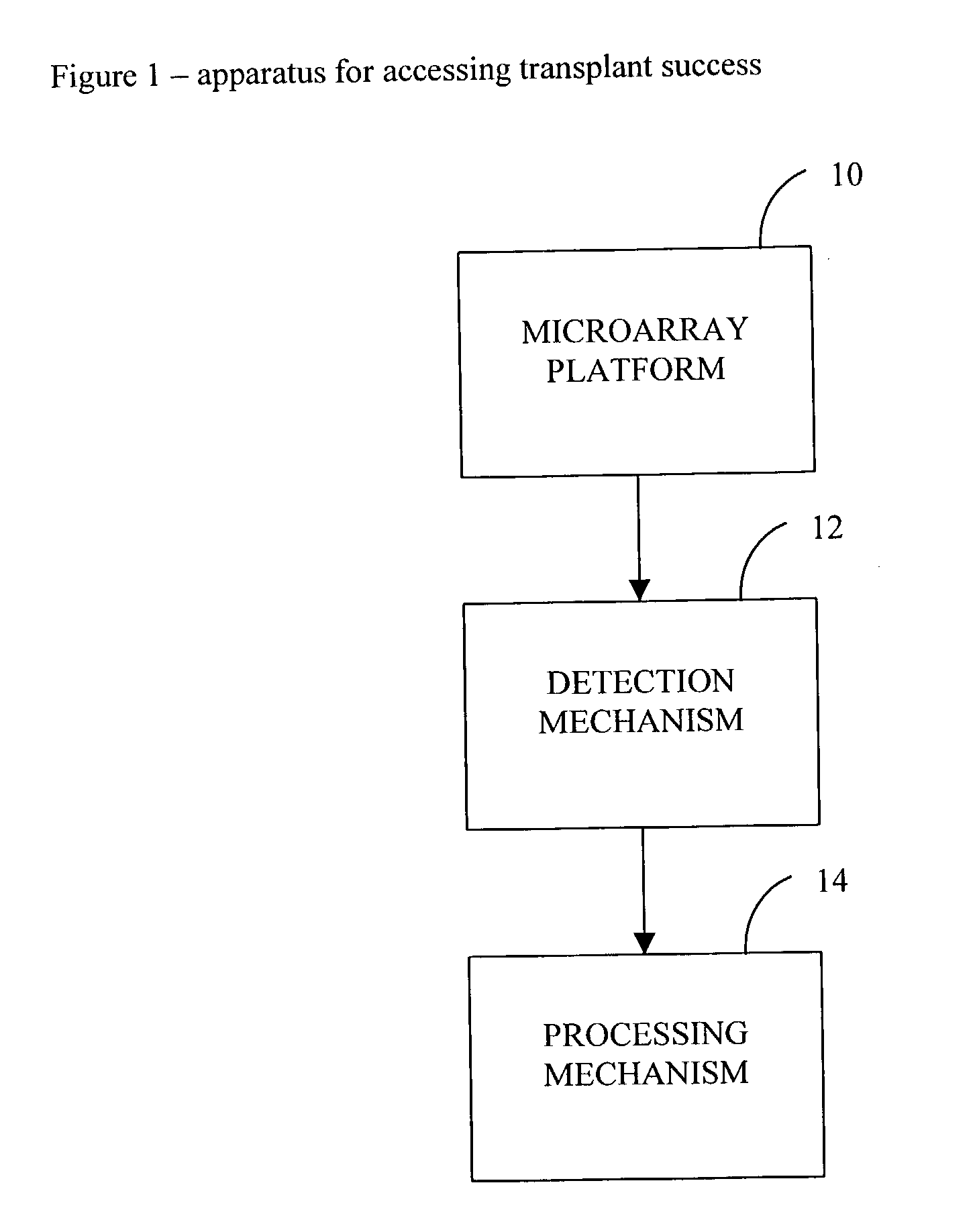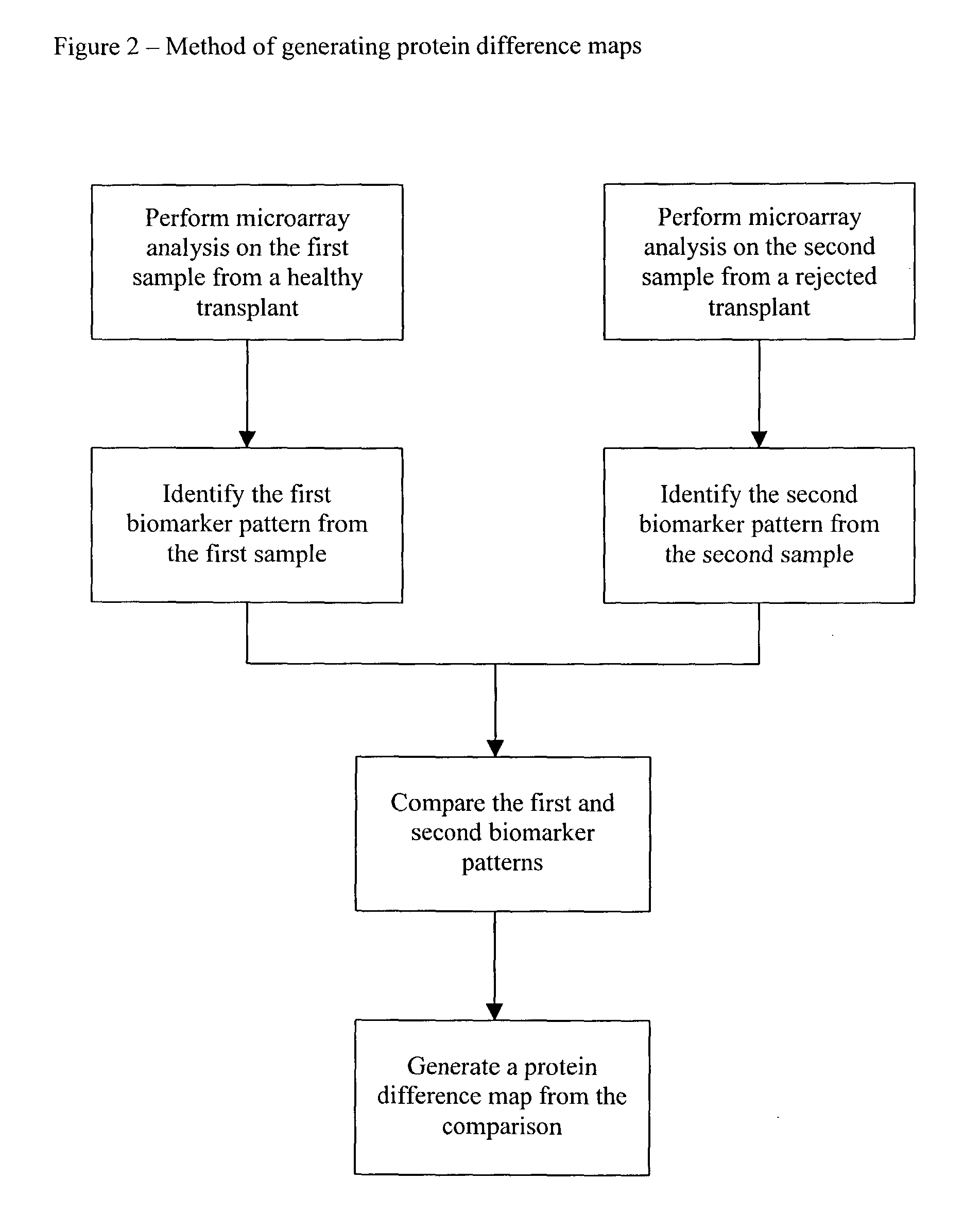Method and use of protein microarray technology and proteomic analysis to determine efficacy of human and xenographic cell, tissue and organ transplant
a technology of protein microarray and proteomic analysis, applied in the field of method and use of protein microarray technology and proteomic analysis to determine the efficacy of human and xenographic cells, tissue and organ transplantation, can solve problems such as underutilization based on nonfunctional conclusions
- Summary
- Abstract
- Description
- Claims
- Application Information
AI Technical Summary
Problems solved by technology
Method used
Image
Examples
example 1
Analysis of Biomarkers in Renal Transplant
[0116] Renal Preservation Solutions Collection
[0117] Following standard porcine nephrectomy, kidneys were gently flushed through the renal artery with HypoThermosol-FRS.TM. (HTS-FRS) hypothermic storage solution (BioLife Solutions, Inc. Binghamton, N.Y.) at 4.degree. C. Following flushing, kidneys were perfused with and submerged in HTS-FRS and statically stored at 4.degree. C. for 6 days, which is well beyond the current acceptable preservation interval of 2-3 days. During preservation, kidneys were flushed with fresh HTS-FRS every 24 hours and the effluent solution was collected during the flush procedure and stored at -80.degree. C. for analysis.
[0118] Urinary Analysis from Transplant Recipients
[0119] Urine samples were collected from human donor and recipient patients following renal transplant at 24, 48, and 72 hours post transplant following standard biologic fluid collection NYPIRB protocol. Following collection, cells secreted into t...
PUM
| Property | Measurement | Unit |
|---|---|---|
| voltage | aaaaa | aaaaa |
| voltage | aaaaa | aaaaa |
| voltage | aaaaa | aaaaa |
Abstract
Description
Claims
Application Information
 Login to View More
Login to View More - R&D
- Intellectual Property
- Life Sciences
- Materials
- Tech Scout
- Unparalleled Data Quality
- Higher Quality Content
- 60% Fewer Hallucinations
Browse by: Latest US Patents, China's latest patents, Technical Efficacy Thesaurus, Application Domain, Technology Topic, Popular Technical Reports.
© 2025 PatSnap. All rights reserved.Legal|Privacy policy|Modern Slavery Act Transparency Statement|Sitemap|About US| Contact US: help@patsnap.com



